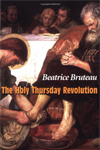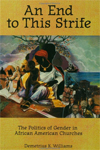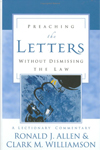|
HOLY THURSDAY
Thursday, April 5, 2012
Guest Writer for This Unit: Yolanda M. Norton, a first-year PhD student at Vanderbilt University in Hebrew Bible and Ancient Israel
The unit you are viewing, Holy Thursday, is a compact unit. This means that it is not a complete commentary of the Scripture(s) selected for this day on the calendar, nor does it have a full, supporting cultural resource unit and worship unit. Instead, to enliven the imagination of preachers and teachers, we have provided a sermonic outline, songs, suggested books, and suggested articles, links, and videos. For additional information, see Holy Thursday in the archives of the Lectionary for 2008–2011. 2011 is the first year that the African American Lectionary has posted compact units for moments on its liturgical calendar.
I. Description of the Liturgical Moment
Holy Thursday, also known as Maundy Thursday, occurs on the Thursday immediately preceding Easter (Resurrection Sunday). The commemoration of this moment begins with the setting of the sun on Holy Thursday. In this liturgical moment the church commemorates Jesus’ Last Supper with the disciples. Holy Week—the week between Palm Sunday and Easter— represents Jesus’ movement from his triumphal entry into Jerusalem to his Resurrection.
The Last Supper was a Passover Seder meal. Jesus, being of Jewish heritage, participated in the ritual of Passover in keeping with God’s commandment to the Jewish people: “Tell your child on that day, ‘It is because of what the Lord did for me when I came out of Egypt.’ It shall serve for you as a sign . . . for with a strong hand the Lord brought you out of Egypt. You shall keep this ordinance at its proper time from year to year” (Exodus 13:8-10).
Passover is for the Jewish people a reminder of God bringing them from bondage into freedom in the same way that our celebration of Holy Week and Easter signifies our release from bondage through the salvific acts of Jesus Christ.
There are four accounts that depict Holy Thursday in the biblical narrative: Matthew 26:17-30, Mark 14:12-25, Luke 22:7-23, and John 13:1-30. In the John 13 account Jesus washes the feet of his disciples in preparation for the Passover meal. It was common practice in antiquity for the host to have his slaves wash the feet of his guests upon their arrival. In keeping with the tradition outlined by Jesus in this narrative, feet washing is often a part of Protestant Holy Thursday worship services.
Cleophus LaRue writes in his 2010 African American Lectionary commentary for Holy Thursday:
In some churches, at the conclusion of the Service, the stripping of the church may occur in which all textiles, crosses, and images are removed or covered until Easter eve. With the setting of the sun on Holy Thursday, the Easter Triduum begins. Triduum literally means “Three Days” and stretches from sunset on Holy Thursday, through Good Friday, and to sunset on Easter. These holy days became a recognized part of the Christian liturgical year by the fourth century.
II. Holy Thursday: Sermonic Outline
A. Sermonic Focus Text(s): Acts 2:22-36 (New Revised Standard Version)
(v. 22) “You that are Israelites, listen to what I have to say: Jesus of Nazareth, a man attested to you by God with deeds of power, wonders, and signs that God did through him among you, as you yourselves know—(v. 23) this man, handed over to you according to the definite plan and foreknowledge of God, you crucified and killed by the hands of those outside the law. (v. 24) But God raised him up, having freed him from death, because it was impossible for him to be held in its power. (v. 25) For David says concerning him, ‘I saw the Lord always before me, for he is at my right hand so that I will not be shaken; (v. 26) therefore my heart was glad, and my tongue rejoiced; moreover my flesh will live in hope. (v. 27) For you will not abandon my soul to Hades, or let your Holy One experience corruption. (v. 28) You have made known to me the ways of life; you will make me full of gladness with your presence.’ (v. 29) Fellow Israelites, I may say to you confidently of our ancestor David that he both died and was buried, and his tomb is with us to this day. (v. 30) Since he was a prophet, he knew that God had sworn with an oath to him that he would put one of his descendants on his throne. (v. 31) Foreseeing this, David spoke of the resurrection of the Messiah, saying, ‘He was not abandoned to Hades, nor did his flesh experience corruption.’ (v. 32) This Jesus God raised up, and of that all of us are witnesses. (v. 33) Being therefore exalted at the right hand of God, and having received from the Father the promise of the Holy Spirit, he has poured out this that you both see and hear. (v. 34) For David did not ascend into the heavens, but he himself says, ‘The Lord said to my Lord, “Sit at my right hand, (v. 35) until I make your enemies your footstool.”’ (v. 36) Therefore let the entire house of Israel know with certainty that God has made him both Lord and Messiah, this Jesus whom you crucified.”
B. Possible Titles
i. Why Holy Thursday?
ii. Victorious Holy Thursday
iii. From Crucifixion to a Crown
C. Point(s) of Exegetical Inquiry
a. Be sure to give exegetical attention to what is meant in the text of verses 34-35: (v. 34) For David did not ascend into the heavens, but he himself says, ‘The Lord said to my Lord, “Sit at my right hand, (v. 35) until I make your enemies your footstool.”’
b. Discuss the cultural relevance of verse 29. In this verse, Peter reminds the audience that despite David’s greatness, he is in fact dead. Peter says “his tomb is with us to this day.” However, the same cannot be said of Jesus; his tomb is empty for he has been resurrected as Peter highlights in verses 34-36 (refer to Psalm 110).
c. Notice the tension highlighted in the text between divine and human action. In Acts 2:22-23 Peter draws attention to what humanity has done to Jesus, but he contrasts this action with the grace of God who “raised him [Jesus] up, having freed him from death” (v. 24) and “made him both Lord and Messiah” (v. 36).
III. Introduction
On the day that we now call Palm Sunday, the Bible tells us that Jesus rode into Jerusalem riding on a donkey, and the people prepared a way for him by laying down palm leaves. In that moment we see that the people knew that the Messiah stood before them. And yet the Bible tells us that five days later Jesus would stand before some of these very same people and they would no longer be shouting “Hosanna, Hosanna!” This time the words ringing in Jesus’ ears would be the shouts of those who sought to crucify him.
And we know that Jesus knew as he rode into Jerusalem that the people would betray him, and he would have to be crucified so that humanity might live. Somewhere between Triumphal Entry and Resurrection the Gospel writers tell us that Jesus had to prepare himself for the trials of crucifixion.
How do we as twenty-first century Kingdom citizens make the proper linkages between the Triumphal Entry, Holy Thursday, Good Friday, and Resurrection Sunday? We cannot without the Holy Spirit. Today’s text speaks of the Holy Spirit having been “poured out”—the day in which the Holy Spirit descended upon the people. Demetrius K. Williams suggests that this was the moment in which the spirit was democratized.1
I want to suggest to you that as we journey towards the Cross with Christ, God is calling us to always make the link between each step in the journey of Christ; they are all connected. Half-stepping will not get us to resurrection and liberation. Today we explore the part of the journey that we call Holy Thursday.
IV. Moves/Points
Move/Point One – Peter reminds the people about Jesus of Nazareth.
Jesus was attested to us by God with “deeds of power, wonders, and signs” (v. 22).
a. Jesus is the one who proved himself worthy over and over again; and
b. King David had a testimony about the Messiah.
Move/Point Two – Your spectators will quickly become your haters.
a. In between Palm Sunday and Good Friday the people turned on Jesus;
b. Even after Jesus was resurrected from the grave, people still did not believe in his power when Pentecost occurred; and
c. Sometimes your haters are the people for which you were sent to sacrifice yourself.
Move/Point Three – The One crucified has been made Lord and Messiah.
a. Do you know with certainty, even in bad times, that Jesus has been made Lord and Messiah?
b. Why is it important that the Lord and Messiah delivered unto us the Holy Spirit?
c. Holy Thursday is a part of the journey of our Lord and Messiah and part of our journey.
V. Celebration
For now, we contemplate. For now, we wash the feet of the other because we know we are all inextricably bound to one another as co-laborers created by a Holy God. For now, we pause and remember the journey that Jesus made and the journey we must make. That’s for now. But, oh, I believe that if we can keep making the link (meaning make the journey) from Palm Sunday to Holy Thursday, from Holy Thursday to Good Friday, one day, resurrection will come!
VI. Sounds, Sights, and Colors in This Passage
| Sights: |
Wonders and signs by Christ; the people killing Christ; the tomb of David; the Holy Spirit being poured out; enemies becoming footstools (v. 35);
|
| Sounds: |
The sound of horns playing a victory chant, for God is victorious over death and we are through Jesus Christ; silence—in honor and reverence of the sacrificing and salvific work of Jesus; and
|
| Colors: |
Purple for Holy Thursday; deep red for the blood of the “crucified” (v. 23); white—Jesus is the pure light of the world; the brightness that he brings outshines the darkness of the world. |
VII. A Suggested Worship Service for Holy Thursday
Following is a brief Holy Thursday service outline. It was prepared by Freeman Palmer for the 2008 Holy Thursday cultural resources unit.
Holy Thursday Worship Service
|
- Gathering (at this time meditative hymns may be played)
- Gathering Words
- Song (choir or praise team) (See the selections provided below in section VIII)
- Scripture(s)
- Spoken Word: either a sermon or three short reflections each lasting about 5–7 minutes, perhaps alternating with a choir selection, solo, liturgical dance, or flashing media images. Reflections could center on the following themes: Life in the Holy Spirit, Service, and Humility
- Foot Washing Ritual
- Songs (See the selections provided below in section VIII)
- Holy Communion
- Dance (a Holy Thursday service I attended at Middle Collegiate Church in Manhattan featured the silhouette of a dancer against the image of the cross on a screen, foreshadowing what was to follow)
- Songs (See the selections provided below in section VIII)
- Tenebrae Service (gradual dimming of lights until the sanctuary is totally dark, signaling the events of Good Friday that are to come and the extinguishing of The Light; the congregation exits in silence).
VIII. Suggested Songs to Accompany This Sermon and/or a Holy Thursday Service
A. Well-known Song(s)
- What a Fellowship. By Elisha A. Hoffman
- Beyond the Veil. By Daryl Coley
- His Blood Washes Me. By O’Landa Draper
B. Modern Song(s) (Written between 2000–2011)
- In the Fellowship. By Patrick Lundy
- But the Blood. By Kirk Franklin
- Justified. By Smokie Norful
C. Spiritual(s)
- I See a Crimson Stream. By G. T. Haywood
- The Blood Will Never Lose Its Power. By Andraé Crouch
- Nothing But the Blood of Jesus. By Robert Lowry. Arr. by Nolan Williams, Jr.
- Taste and See. By James E. Monroe
D. Liturgical Dance Music
- Blessed, Broken, Given. By CeCe Winans
- O the Blood. By Donnie Harper
E. Song or Instrumental for the Period of Prayer
- I Love You Lord. By Laurie Klein
- Take My Life and Let It Be. By Frances Ridley Havergal
- A Perfect Sacrifice. By V. Michael McKay
- There’s Room at the Cross for You. By Ira Stamphill
F. Sermonic Selection
- He Never Said a Mumblin’ Word. For solo
- Great Is Our God. By James Hall
IX. Videos, Audio, and/or Interactive Media
X. Books to Assist in Preparing Sermons or Bible Studies for Holy Thursday
 |
Bruteau, Beatrice. The Holy Thursday Revolution. Maryknoll, NY: Orbis Books, 2005.
|
 |
Williams, Demetrius K. “Acts,” True to Our Native Land: An African American New Testament Commentary. General ed. Brian K. Blount. Minneapolis, MN: Fortress Press, 2007. pp. 213–222.
|
 |
Allen, Ronald J., and Clark M. Williamson. Preaching the Letters without Dismissing the Law: A Lectionary Commentary. Louisville, KY: Westminster John Knox Press, 2006.
pp. 45–46.
|
XI. Notes for Select Songs
A. Well-known Song(s)
- What a Fellowship. By Elisha A. Hoffman
Location:
L.A. Mass Choir. Best of L.A. Mass Choir. Indianapolis, IN: Platinum Ent., 1996.
- Beyond the Veil. By Daryl Coley
Location:
Beyond the Veil: Live at Bobby Jones Gospel XIII. Sparrow, TN: Sparrow, 1996.
- His Blood Washes Me. By O’Landa Draper
Location:
Draper, O’Landa & The Associates. Gotta Feelin. New York, NY: Warner Bros., 1996.
B. Modern Song(s) (Written between 2000–2011)
- In the Fellowship. By Patrick Lundy
Location:
Lundy, Patrick & The Ministers of Music. In the Fellowship. Bartow, FL: Meridian Music Group, 2005.
- But the Blood. By Kirk Franklin
Location:
Hello Fear. Inglewood, CA: Gospocentric, 2011.
- Justified. By Smokie Norful
Location:
Live. Brentwood, TN: EMI Gospel, 2009.
C. Spiritual(s)
- I See a Crimson Stream. By G. T. Haywood
Location:
African American Heritage Hymnal. Chicago, IL: GIA Publications, 2001. #268
- The Blood Will Never Lose Its Power. By Andraé Crouch
Location:
Zion Still Sings for Every Generation. Nashville, TN: Abingdon Press, 2007. #204
- Nothing But the Blood of Jesus. By Robert Lowry. Arr. by Nolan Williams, Jr.
Location:
African American Heritage Hymnal. #262
- Taste and See. By James E. Monroe
Location:
Zion Still Sings. #205
D. Liturgical Dance Music
- Blessed, Broken, & Given. By CeCe Winans
Location:
Alabaster Box. Brentwood, TN: Chordant, 1999.
- O the Blood. By Donnie Harper
Location:
New Jersey Mass Choir. Hold Up the Light. Nashville, TN: Compendia, 2003.
E. Song or Instrumental for the Period of Prayer
- I Love You Lord. By Laurie Klein
Location:
Boyz, Katina. Lifestyle: A Worship Experience. Brentwood, TN: Chordant Distribution, 2002.
African American Heritage Hymnal. #573
- Take My Life and Let It Be. By Frances Ridley Havergal
Location:
African Methodist Episcopal Zion Bicentennial Hymnal. Nashville, TN: A.M.E. Zion
Publishing House, 1996. #470
Church of God in Christ. Yes, Lord! Church of God in Christ Hymnal. Memphis, TN:
Church of God in Christ Pub. Board in association with the Benson Co., 1982. #337
- A Perfect Sacrifice. By V. Michael McKay
Location:
African American Heritage Hymnal. #229
- There’s Room at the Cross for You. By Ira Stamphill
Location:
African American Heritage Hymnal. #245
Yes, Lord! Church of God in Christ Hymnal. #468
F. Sermonic Selection
- He Never Said a Mumblin’ Word. For solo
Location:
African Methodist Episcopal Zion Bicentennial Hymnal. #156
Yes, Lord! Church of God in Christ Hymnal. #251
- Great Is Our God. By James Hall
Location:
The Best of James Hall & Worship and Praise. Alpharetta, GA: CGI Platinum, 2000.
Note
1. Williams, Demetrius K. “Acts.” True to Our Native Land: An African American New Testament Commentary. General ed. Brian K. Blount. Minneapolis, MN: Fortress Press, 2007. p. 217.
|